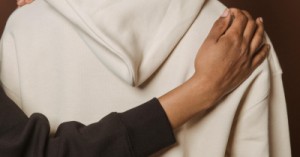Multimodal representations in early childhood education involve using multiple modes of communication, such as writing, sound, and images, to represent and convey information. The following article provides information on How To Get Started, Multimodal Learning, Benefits Of Multimodal Learning, Examples and Activities, and more.
Multimodal Representations In Early Childhood
Using a multimodal approach is particularly effective as it allows children to explore, represent, and communicate their thinking and learning in diverse ways. Here are some key points:
-
Diverse Modalities: Children can use various tools like pens, pencils, clay, music, and digital devices to document their learning. This variety helps cater to different learning styles and preferences.
-
Digital Integration: Incorporating digital technologies, such as iPads and digital pencils, can enhance children's ability to document and share their ideas through images, videos, drawings, music, and voice.
-
Empowerment and Choice: Allowing children to choose their preferred modes of documentation empowers them and encourages self-efficacy.
-
Play and Social Interactions: Multimodality is present in forms of play, the use of toys, devices, technology, drama, and social interactions. These modality-rich avenues support literacy development through engaging structures for children.
-
Collaborative Learning: Multimodal approaches create opportunities to position the student as the expert in their own learning and foster collaborative learning environments.
By incorporating multimodal representations, educators can create a more engaging and reflective learning environment that values children's perspectives and contributions.
How To Get Started
Getting started with multimodal representations in early childhood education can be an exciting journey. Here are some steps to help you integrate this approach effectively:
-
Understand the Concept: Familiarize yourself with the principles of multimodal representations and how they can enhance learning. This involves using various modes of communication, such as writing, sound, and images, to represent and convey information.
-
Gather Resources: Collect materials and tools that support multimodal learning. This can include art supplies, musical instruments, digital devices, and sensory materials.
-
Plan Activities: Design activities that incorporate multiple modes of representation. For example, you can combine storytelling with drawing, music, and movement to create a rich, engaging learning experience.
-
Create a Supportive Environment: Set up your learning space to encourage exploration and creativity. Provide different areas for activities like art, music, and dramatic play, and ensure that children have easy access to the materials they need.
-
Encourage Expression: Allow children to choose how they want to express their ideas and learning. This could be through drawing, building, singing, or using digital tools. Encourage them to experiment with different modes and find what works best for them.
-
Document Learning: Use multimodal approaches to document children's learning. This can include taking photos, recording videos, and creating portfolios that showcase their work in various formats.
-
Engage Parents: Involve parents in the process by sharing information about multimodal learning and encouraging them to support their child's exploration at home. Provide ideas for activities they can do together that incorporate different modes of representation.
-
Reflect and Adapt: Regularly reflect on the effectiveness of your multimodal activities and make adjustments as needed. Gather feedback from children and parents to ensure that the approach is meeting their needs and enhancing their learning experience.
By following these steps, you can create a dynamic and engaging learning environment that supports children's development through multimodal representations.
Multimodal Learning
Multimodal learning in early childhood education involves using various modes of communication and representation to enhance children's learning experiences. This approach recognizes that children learn in different ways and provides multiple avenues for them to express their understanding and creativity. Here are some key aspects of multimodal learning:
-
Visual: Incorporating visual elements such as pictures, drawings, and videos to help children understand and retain information.
-
Auditory: Using sounds, music, and spoken language to engage children and support their learning.
-
Kinesthetic: Encouraging hands-on activities and movement to help children learn through physical experiences.
-
Digital: Integrating technology, such as tablets and interactive whiteboards, to provide interactive and engaging learning opportunities.
-
Textual: Including written words and texts to support literacy development and comprehension.
By combining these different modes, educators can create a rich and dynamic learning environment that caters to the diverse needs and preferences of young children. This approach not only enhances engagement but also supports the development of various skills, including critical thinking, creativity, and communication.
Benefits Of Multimodal Learning
Multimodal learning in early childhood education is a dynamic approach that leverages various modes of communication and representation to enhance children's learning experiences. Here are some key aspects and benefits of multimodal learning:
-
Engagement and Motivation: By incorporating different modes such as visual, auditory, kinesthetic, and digital, children are more likely to stay engaged and motivated. This variety caters to different learning styles and keeps the learning process exciting.
-
Enhanced Understanding: Multimodal learning helps children understand concepts better by allowing them to experience and express their learning in multiple ways. For example, a child might understand a story better by listening to it, drawing scenes from it, and acting it out.
-
Creativity and Expression: This approach encourages children to use their creativity and express themselves in diverse ways. Whether through art, music, movement, or digital media, children can find the mode that best suits their strengths and interests.
-
Development of Multiple Skills: Multimodal learning supports the development of various skills simultaneously. For instance, a project that involves drawing, writing, and presenting can enhance fine motor skills, literacy, and public speaking.
-
Inclusive Learning Environment: By recognizing and valuing different modes of learning, educators can create a more inclusive environment that respects and supports the diverse needs of all children.
-
Collaboration and Social Interaction: Multimodal activities often involve group work, which fosters collaboration and social interaction. Children learn to work together, share ideas, and build relationships.
Examples and Activities For Multimodal Learning
Here are some specific examples and activities to incorporate multimodal learning in early childhood education:
-
Storytelling with Props: Use puppets, toys, or felt boards to bring stories to life. Children can engage with the story by acting out parts, which enhances their understanding and retention.
-
Music and Movement: Incorporate songs and dance into your lessons. For example, use a song to teach the alphabet or numbers, and encourage children to move and dance along.
-
Art and Craft Projects: Provide various materials for children to create art projects related to the themes you are teaching. This could include painting, drawing, collagemaking, or sculpting with clay.
-
Interactive Read-Alouds: Read books aloud and encourage children to participate by asking questions, making predictions, and discussing the story. Use different voices for characters and add sound effects to make the story more engaging.
-
Sensory Play: Set up sensory bins with different materials like sand, water, rice, or playdough. Sensory play helps children explore textures, develop fine motor skills, and engage their senses.
-
Digital Storytelling: Use tablets or computers to create digital stories. Children can draw pictures, record their voices, and add text to create their own stories.
-
Science Experiments: Conduct simple science experiments that allow children to explore and observe. For example, you can create a volcano eruption with baking soda and vinegar or explore the properties of water with different objects.
-
Role-Playing and Dramatic Play: Set up a dramatic play area with costumes and props related to different themes, such as a doctor's office, grocery store, or space station. Encourage children to role-play and use their imagination.
-
Outdoor Exploration: Take children outside to explore nature. You can go on a nature walk, collect leaves and rocks, or set up a garden where children can plant and care for flowers and vegetables.
-
Interactive Whiteboards: Use interactive whiteboards to display videos, play educational games, and create interactive lessons. Children can come up to the board to participate and engage with the content.
These activities provide a variety of ways for children to learn and express themselves, catering to different learning styles and preferences. By incorporating multimodal learning, you can create a rich and engaging educational environment that supports the holistic development of young children.
Further Reading
Involving Children In Documentation
Tactile Learning
Kinaesthetic Learning In Early Childhood
Learning Styles According To Howard Gardner
Implementing Different Learning Styles When Teaching Children
Reference:
Multimodality Representations In Early Childhood, Scholarworks







 As an Educator in Australia, your pay rate falls under the Children’s Services Award 2010. This award states the minimum amount that an employer can
As an Educator in Australia, your pay rate falls under the Children’s Services Award 2010. This award states the minimum amount that an employer can When working as a qualified Early Childhood Teacher (with a university degree) within a service, your rate of pay will come from the Educational Services
When working as a qualified Early Childhood Teacher (with a university degree) within a service, your rate of pay will come from the Educational Services When working as a Diploma Qualified Educator your pay rate is from the Children's Services Award 2010. This Award states your minimum rate of pay
When working as a Diploma Qualified Educator your pay rate is from the Children's Services Award 2010. This Award states your minimum rate of pay When working as a Cert 3 Qualified Educator, your pay rate is from the Children's Services Award 2010. This Award states your minimum rate of
When working as a Cert 3 Qualified Educator, your pay rate is from the Children's Services Award 2010. This Award states your minimum rate of Educational Leaders play a crucial role in their early childhood service by ensuring that the educational program aligns with best practices and supports the holistic
Educational Leaders play a crucial role in their early childhood service by ensuring that the educational program aligns with best practices and supports the holistic In early childhood education and care, ratios are more than a technicality—they are a frontline safeguard. Every child deserves responsive supervision, emotional connection, and developmental
In early childhood education and care, ratios are more than a technicality—they are a frontline safeguard. Every child deserves responsive supervision, emotional connection, and developmental Here’s a comprehensive Mobile Phone and Smart Watch Policy tailored for early childhood education and care (ECEC) services in Australia, aligned with the latest 2025
Here’s a comprehensive Mobile Phone and Smart Watch Policy tailored for early childhood education and care (ECEC) services in Australia, aligned with the latest 2025 With the new national child safety reforms kicking in on 1 September 2025, early childhood services like yours have a real opportunity to lead the
With the new national child safety reforms kicking in on 1 September 2025, early childhood services like yours have a real opportunity to lead the The Sea of Fish Challenge is a national initiative that invites children, educators, families, and communities to create and display fish artworks as a symbol
The Sea of Fish Challenge is a national initiative that invites children, educators, families, and communities to create and display fish artworks as a symbol Across the early childhood education and care sector, educators are sounding the alarm: current staffing ratios are insufficient to deliver safe, meaningful, and developmentally appropriate
Across the early childhood education and care sector, educators are sounding the alarm: current staffing ratios are insufficient to deliver safe, meaningful, and developmentally appropriate


